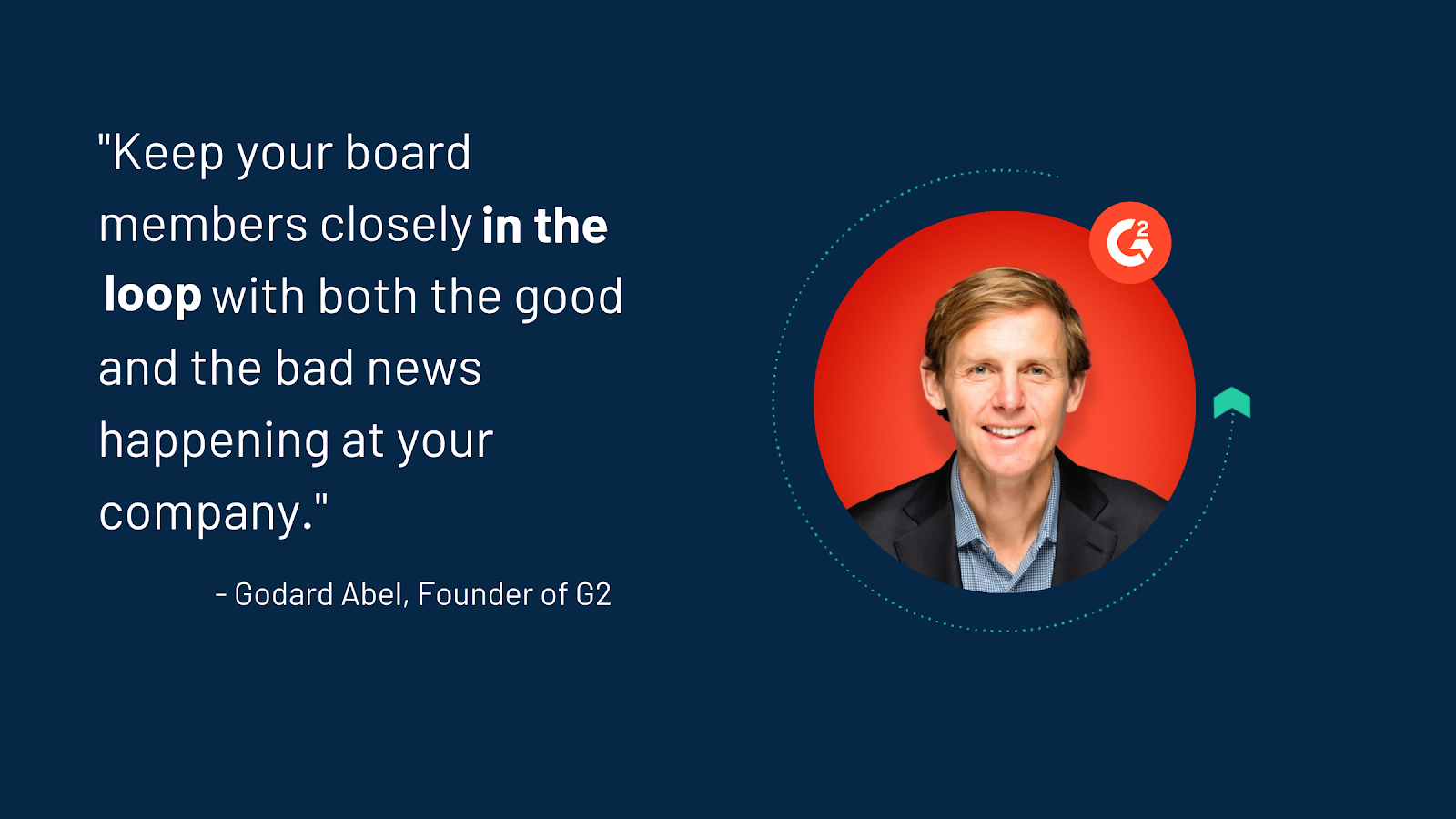No matter the industry or the size of the business, building a board of directors is a crucial step as an entrepreneur.
Over the years, I’ve grown four businesses, successfully sold two of them, and raised over $300 million in growth equity. During this time, I’ve learned some things along the way about what the right kind of board of directors looks like. I’ve made some mistakes, too, and I’ve grown from each misstep.
I recently sat down with Emergence, who aims to level the playing field in the world of entrepreneurship as they organize events targeted toward female founders in the enterprise software and technology space. I’m often asked by entrepreneurs for this type of advice, so I wanted to officially share the six key lessons I’ve learned regarding building a board of directors as you grow a startup into a global business.
How to build a board of directors
Building a board the right way can be harder than you think, especially if you’re unsure where to start. In my experience, these three tips can help entrepreneurs set the tone for success as they scale their startup.
1. Choose members you enjoy working with
When it comes to building your board of directors from the ground up, the first piece of advice I have for founders is to make sure you choose board members that you truly enjoy working with and being around, in good times and in bad.
Almost all startups are going to go through tremendous highs and lows (including whiff-eee-o moments). When you find yourself in these kinds of positions, you want a board member by your side whom you feel good about calling in these moments.

click to tweet
2. Don't add members too early into the process
As you select members to be on your board, it’s important to avoid adding too many members in the early days of your company. It’s a better idea to keep the board small, so you can have easy governance and room to add new talent to the board as you grow and scale.
To avoid this common pitfall, I’d suggest putting in place an advisory board in order to get more people involved, but keep the core board of directors as small as possible. You should only add directors whom you truly want to work with for many years to come.
3. Add an independent board member when it's time to scale
Finally, the last step in building your board of directors is knowing how and when to introduce an independent board member.
When it was time to add the first independent board member here at G2, we waited until we were really ready to scale in the market post Series B. We were extremely lucky to recruit Meagen Eisenberg, who was part of IPO leadership teams at DocuSign, MongoDB, and is now CMO at TripActions.
Meagan is truly an incredible tech-industry marketing leader and she knew she could advise us on selling to other marketing leaders, scaling our go-to-market, and building our brand.
How to leverage a board of directors
Once your board of directors is built, you need to know how to leverage it to your company’s advantage. Below are my three tips for entrepreneurs to get the most out of their board.
1. Keep your board fully informed
As an early-stage founder, one of the best ways to get the most out of your board is to keep board members closely in the loop with both good and bad news happening at your company.
One way to accomplish this is by creating a regular newsletter, sent either weekly or monthly, with a comprehensive update including progress, challenges, and clear asks for help. Doing so will give board members context and a look behind the scenes.

click to tweet
2. Always have a proposed plan of action
Finally, when leveraging your board of directors, it’s best to avoid one of the most common strategic pitfalls -- not having a clear plan.
Some founders tend to ask their board members open-ended questions like “what would you do?”, or believe that their board is for open advice. I always find it much more effective to share a point of view, or a clear plan of action, that you’re likely to take and allow the board members to react accordingly.
It’s up to the founder to lead and set direction, whereas board members can be better advisors when they’re giving feedback and advice based on a proposed plan.
Your board members want to feel like you’re driving the bus, not the other way around. They can guide you down the road, but at the end of the day, it’s up to you to have the most context and the most informed divine intuition on what to do. Share it with them first!
3. Ask your board for help in growing the business
Your board of directors will typically bring extensive networks and a natural ability to help you sell candidates, customers, and strategic partners. Put them to work!
When you send your board an update, always include some specific asks for help in areas such as sourcing candidates for key roles, interviewing and selling important hires, introducing you to target customers in their networks, and helping you engage with crucial strategic partners.
In addition, board members should be in a great position to help you develop relationships with potential lead investors for future rounds as you always want to start building new investor relationships well before you do your next fundraiser.
Investors typically want to help you, but their time is limited. If you don’t make specific asks they won’t grab the oar and row the boat with you.
When they do offer assistance, make sure you keep them in the loop regarding the conversations they helped to initiate. Take the time to thank and recognize them when they help you win a candidate or a customer! Investors want love and recognition, too.
A board wasn't built in a day
Remember to have patience, always be transparent, and provide open channels of communication with your board of directors. In good times and in bad, for all of the highs and the lows, these six tips will help you to design a board that makes it possible to see the big picture.


 by Chris Voce
by Chris Voce
 by Godard Abel
by Godard Abel
 by Godard Abel
by Godard Abel